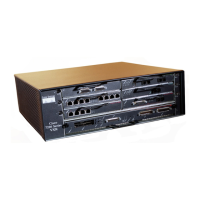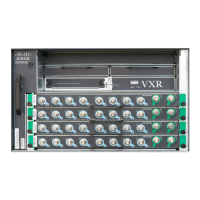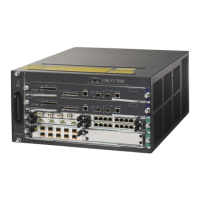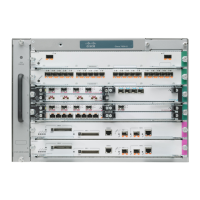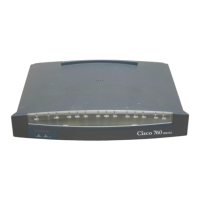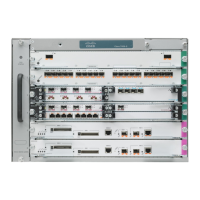Send document comments to nexus7k-docfeedback@cisco.com
9-2
Cisco Nexus 7000 Series NX-OS Interfaces Configuration Guide, Release 5.x
OL-23435-03
Chapter 9 Configuring Q-in-Q VLAN Tunnels
Information About Q-in-Q Tunnels
Note Q-in-Q is supported on port channels and vPC. To configure a port channel as an asymmetrical link, all
ports in the port channel must have the same tunneling configuration.
Using the 802.1Q tunneling feature, service providers can use a single VLAN to support customers who
have multiple VLANs. Customer VLAN IDs are preserved and traffic from different customers is
segregated within the service-provider infrastructure even when they appear to be on the same VLAN.
The 802.1Q tunneling expands VLAN space by using a VLAN-in-VLAN hierarchy and tagging the
tagged packets. A port configured to support 802.1Q tunneling is called a tunnel port. When you
configure tunneling, you assign a tunnel port to a VLAN that is dedicated to tunneling. Each customer
requires a separate VLAN, but that VLAN supports all of the customer’s VLANs.
Customer traffic tagged in the normal way with appropriate VLAN IDs come from an 802.1Q trunk port
on the customer device and into a tunnel port on the service-provider edge switch. The link between the
customer device and the edge switch is an asymmetric link because one end is configured as an 802.1Q
trunk port and the other end is configured as a tunnel port. You assign the tunnel port interface to an
access VLAN ID unique to each customer. See Figure 9-1.
Note Selective Q-in-Q tunneling is not supported. All frames entering the tunnel port will be subject to Q-in-Q
tagging.
Figure 9-1 802.1Q-in-Q Tunnel Ports
Packets entering the tunnel port on the service-provider edge switch, which are already 802.1Q-tagged
with the appropriate VLAN IDs, are encapsulated with another layer of an 802.1Q tag that contains a
VLAN ID unique to the customer. The original 802.1Q tag from the customer is preserved in the
encapsulated packet. Therefore, packets that enter the service-provider infrastructure are double-tagged.
Customer A
VLANs 1 to 100
Customer B
VLANs 1 to 200
Customer B
VLANs 1 to 200
Customer A
VLANs 1 to 100
Tunnel port
VLAN 40
Tunnel port
VLAN 30
Trunk
ports
Trunk
ports
Tunnel port
VLAN 30
Tunnel port
VLAN 40
Service
provider
802.1Q trunk port
802.1Q trunk port
802.1Q trunk port
802.1Q trunk port
802.1Q trunk port
74016
Trunk
Asymmetric link
Tunnel port
VLAN 30
802.1Q trunk port
802.1Q trunk port
802.1Q trunk port
802.1Q trunk port
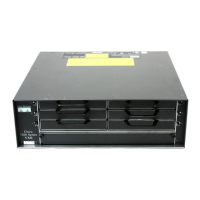
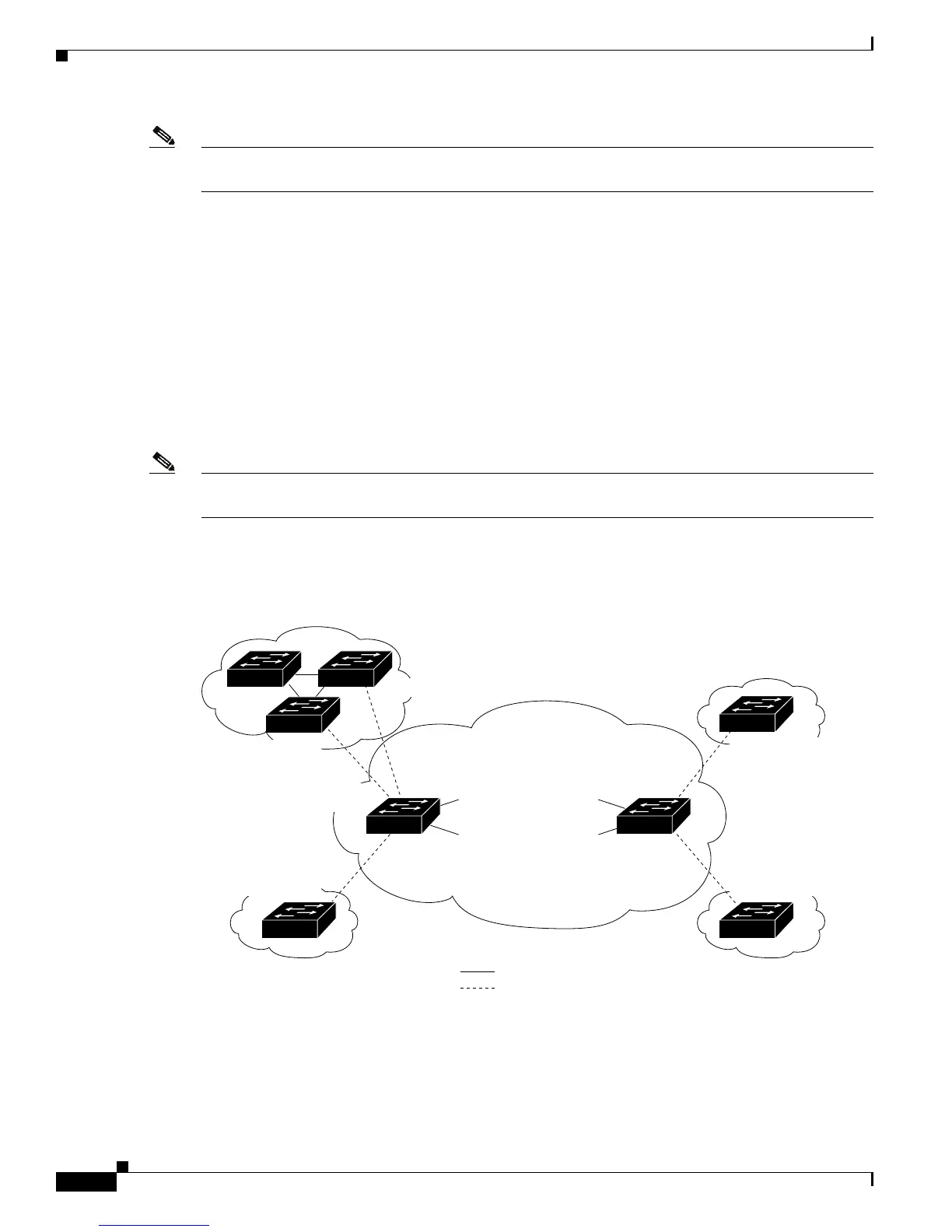